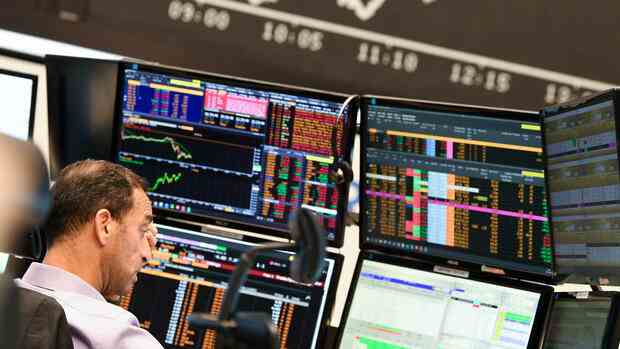The worst fears from the first months of the war have not yet been confirmed.
(Photo: dpa)
Strong corporate profits, which were almost as high in 2022 as in the record year 2021, have driven the Dax to its highest level in 13 months. Less than five percent are still missing until a new all-time high. Compared to the date of the Russian attack on Ukraine on February 24 last year, the Dax is even eleven percent higher. Have the prospects for the 40 largest publicly traded companies and their stocks really improved since then? Doubts are appropriate – despite the optimistic bank forecasts.
As pointed out in many stock market forecasts, the worst fears from the first months of the war were not confirmed. We neither had to freeze in cold apartments in winter because the gas ran out, nor were there widespread production failures in industry because there was a lack of the necessary energy.
Concerns that Europe and the USA will slide into a severe recession are also fading away. In this respect, the recovery rally in recent months was justified after the Dax had lost a quarter of its value in the first three quarters of last year.
But companies and their shares are faced with a new, no less big and, above all, long-lasting problem: rising interest rates. This is ensured by persistently high inflation rates, which is why the central banks are raising interest rates more vigorously than ever before.
Hopes that the central banks would cave in and immediately lower interest rates again as soon as the first signs of a slowdown in inflation or the economy appear have evaporated. This is signaled by the sharp rise in yields on corporate and government bonds. At least on the bond markets, which the professionals dominate, hardly anyone expects interest rate hikes to end any time soon.
Higher interest rates put pressure on companies and their stocks
It may come as a surprise that the stock markets have not reacted to this so far. As a rule, higher interest rates put companies and their shares under pressure in a number of ways. Firstly, the “stock” form of investment is faced with major and increasingly lucrative competition: Those who invest their money in government bonds from Western European countries or the United States or in solid corporate bonds now receive annual interest rates of between three and five percent. Gone are the days when there was no interest at all and therefore shares were considered the only lucrative form of investment.
Secondly, both future and old loans become more expensive for companies as soon as they have to be refinanced when they expire. New bank loans and bonds are three, four or five times more expensive today than they were a year ago. In view of the record high level of debt – the 150 largest German listed companies have net financial debt of more than 500 billion euros – future cash flows and profits will be used much more than before for interest on debt. Correspondingly less money is available for investments and dividends.
This is a slow and gradual process that will have a greater impact with each subsequent quarter and year as more and more legacy loans and bonds have to be replaced with new ones.
The fact that the stock markets have not yet reacted to this scenario is no price guarantee for the future. In the past, too, interest rate turns only had an impact with a delay. The reason for this is that at the beginning of a turnaround in interest rates, the economy is usually (still) doing well, companies are making high profits and they have to pay little money for their debts due to the previous low interest rates. It’s the same this time.
With almost all interest rate turns, the stock markets only came under pressure in the second half of the round of interest rate hikes. Investors should expect that again this time.
More: The 352 billion risk
